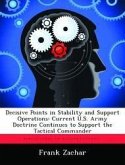This paper examines the evolution of targeting and asks how effectively has the U.S. Air Force incorporated targeting into its theory, doctrine and infrastructure underpinning practice. To answer this question, I begin by defining targeting. The objective is to emphasize targeting's pivotal role in the application of aerospace power. The paper focuses on fixed targeting. Mobile targeting is important, yet focuses primarily on fielded forces rather than the classical centers of gravity (COG): leadership, organic essentials, infrastructure and population, which are influenced through strategic attack, counter-information, and space, airpower functions that depend on fixed targeting. Following a brief look at theory, the paper examines historical targeting practices from WW I to Operation Allied Force to determine how effectively the Air Force incorporated targeting into practice. The paper then assesses how effectively the U.S. Air Force has incorporated the targeting discipline into its current doctrine and infrastructure. The last chapter examines the potential implications in order to answer the "so what" associated with the paper's findings. The conclusion reached is Air Force targeting suffers from a lack of vision, doctrine and the requisite infrastructure underpinning practice that represents a source of operational risk to the effective employment of airpower.








